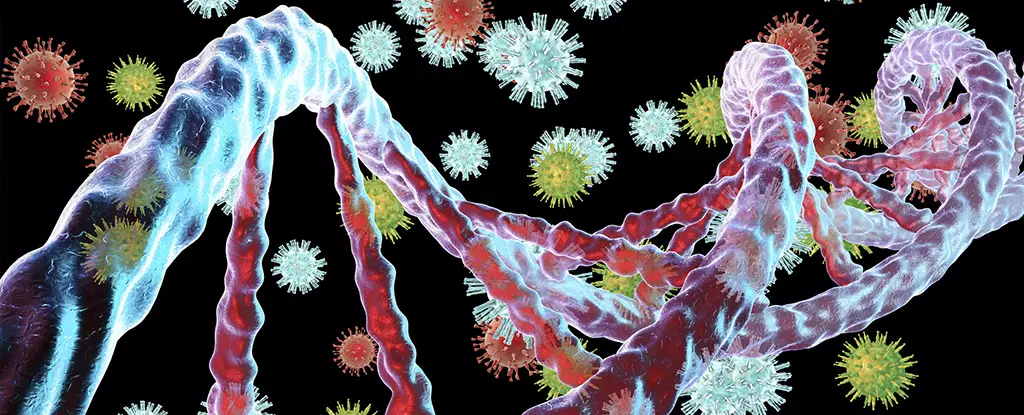In a groundbreaking discovery, scientists have identified traces of ancient viruses embedded within the DNA of a single-celled organism. This finding challenges traditional notions of viral-host relationships and sheds light on the potential role of viruses in the evolution of complex organisms. Led by evolutionary biologist Alex de Mendoza Soler from Queen Mary University of London, the research provides compelling insights into the dynamic interaction between viruses and their hosts.
The study reveals that the single-celled eukaryote Amoebidium has integrated genetic material from ancient, giant viruses into its genome. Described as “Trojan horses hiding inside the Amoebidium’s DNA,” these viral insertions may have exerted a significant influence on the evolution of the organism. Despite the potential harm posed by foreign genes, Amoebidium has developed a mechanism to silence these viral elements, thereby maintaining genetic stability.
Amoebidium’s ability to mix its genome with that of giant virus predators highlights a remarkable survival strategy. By modifying the DNA base cytosine through 5-methylcytosine, the organism can silence foreign genes and prevent detrimental outcomes. The presence of the enzyme DNMT1, responsible for this modification, suggests a deep-rooted evolutionary adaptation that dates back to the pre-animal ancestors of complex organisms.
Contrary to the conventional view of viruses as invaders, the study proposes a more nuanced understanding of the virus-host relationship. Rather than being passive recipients of viral genetic material, organisms like Amoebidium may actively incorporate beneficial genes from ancient viruses into their lineage. This dynamic process of genetic exchange challenges existing assumptions about the impact of viruses on host evolution.
By examining the genomes of diverse Amoebidia, researchers have uncovered a high level of genetic diversity derived from viral insertions. This implies an ongoing and dynamic process of genetic exchange between organisms and viruses, potentially contributing to the evolution of complex traits. The incorporation of viral genes into host lineages may have provided organisms with novel genetic material, enhancing their adaptability and evolutionary success.
The presence of ancient viral remnants in the DNA of Amoebidium mirrors similar phenomena observed in humans and other mammals. Endogenous retroviruses, considered as leftover bits of ancient viral invasions, are found in the genomes of complex organisms. Contrary to their previous characterization as inactive remnants, these viral elements may have conferred evolutionary advantages to host organisms, leading to their preservation in the genome.
The study of ancient viruses embedded within the DNA of single-celled organisms offers a fresh perspective on the complex interplay between viruses and their hosts. By elucidating the mechanisms of genetic exchange and adaptation, researchers have highlighted the potential contributions of viruses to the evolution of complex traits. This research not only expands our understanding of evolutionary processes but also underscores the intricate relationships between organisms and their viral counterparts.

Leave a Reply